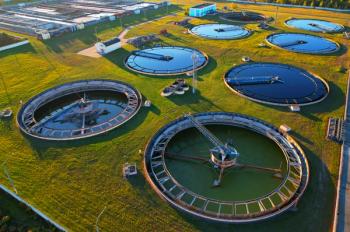
- The Application Notebook-06-01-2011
- Volume 0
- Issue 0
Advantages of Multi-Pesticide Screening by GC–MS
Due to the increasing number of toxic pesticides being used throughout the world, a robust method for positively identifying low levels of multiple classes of pesticides is required. A Zebron? ZB-MultiResidue? column is used with GC–MS to identify over 100 common pesticides.
Due to the increasing number of toxic pesticides being used throughout the world, a robust method for positively identifying low levels of multiple classes of pesticides is required. A Zebron™ ZB-MultiResidue™ column is used with GC–MS to identify over 100 common pesticides.
There is an increasing amount of trade in agricultural products, resulting in a greater need to regulate those exports/imports for toxic chemicals like pesticides. Many countries importing foods are striving for testing protocols that account for the variation of pesticides being used as well as different regulations of other exporting countries. To this end, a widely accepted method of pesticide residue identification and quantitation relies on a screening approach using GC–MS.
Multiresidue screening analyses are typically extracted using QuEChERS, which do not fractionate residues into separate classes. The large number of resulting compounds must be separated in one chromatographic run. A GC–MS is used to separate and positively identify compounds as well as give low detection limits.
Figure 1: Multiresidue pesticide screen. For peak identities, please contact Phenomenex.
For this work, a column specifically designed for multiple pesticide detection is used, the ZB-MultiResidue-1. The column was developed using a new stationary phase unlike any commercially available columns today. The column is also MS certified making it ideal for use with GC–MS for multiresidue pesticide methods.
Experimental Conditions
A Zebron ZB-MultiResidue column of 30 m × 0.25 mm ID × 0.25 µm dimensions (Phenomenex, Torrance, California) was used in an Agilent 6890 with 5973 MSD (Palo Alto, California). The splitless injection of 1.0 µL of 1 ppm analytes was made with constant flow helium at 0.9 mL/min. The oven program was 80 °C for 0.5 min to 150 °C @ 10 °C/min to 240 °C @ 4 °C/ min to 320 °C @ 15 °C/min for 3 min.
Results
The chromatogram for a multi-pesticide screen is presented in Figure 1. This chromatogram contains 112 of the most commonly detected pesticides, including chlorinated, nitrogen, and phosphorous-containing pesticides classes.
Typical chromatograms using 5% phenyl phases can have clusters of coeluting peaks in the center of the chromatogram. The unique selectivity of the ZB-MultiResidue-1 column offers improved separation of previously clustered peaks. Fewer coelutions are advantageous for sensitive SIM methods because fewer peaks are included in the SIM window. This results in easier identification, greater signal to noise, and lower detection limits.
The column is also MS certified, providing low bleed in sensitive MS detectors. This lowers noise levels for later-eluting compounds like permethrins, making detection and quantitation easier.
Conclusions
A pesticide multiresidue screening method is presented using a new gas chromatographic column (Zebron ZB-MultiResidue) coupled with mass spectrometry. This method provides for improved analyte separation which can result in easier SIM method development as well as improved quantitation. In addition, this MS certified column provides low bleed to reduce instrument maintenance and provide better detection limits for later-eluting compounds.
Additional methods are available that include retention of more than 300 different pesticides. For further information on multiresidue methods, please contact Phenomenex.
Phenomenex Inc.
411 Madrid Avenue, Torrance, CA 90501
tel. (310) 212-0555, fax (310) 328-7768
Website:
Articles in this issue
over 14 years ago
Hydroxyethylstarches (HES)over 14 years ago
Aggregated Singletons for Automated Purification WorkflowNewsletter
Join the global community of analytical scientists who trust LCGC for insights on the latest techniques, trends, and expert solutions in chromatography.





